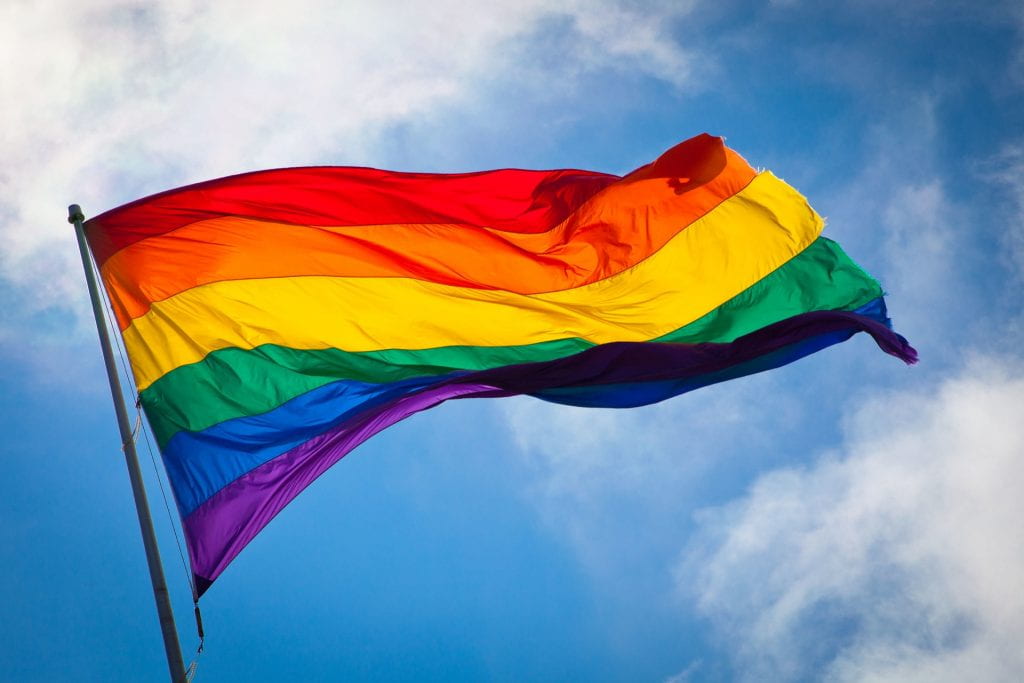By Nora Leahy, MPH, CHES, Program for the Elimination of Cancer Disparities
Every June we celebrate Pride Month and the great diversity, strength, and resilience of the LGBTQIA+ community. We reflect on the past and honor those who risked everything to pave the way toward equality. We also imagine and strive for a future rooted in equity and inclusion where no one in the community is left behind.
Since Stonewall in 1969, there has been significant progress in advancing the rights of the LGBTQIA+ community, but there is still work to do. Despite advancements, the LGBTQIA+ community still experiences health disparities and lacks many legal protections from discrimination in healthcare settings. As this Pride Month comes to a close, we at the Program for the Elimination of Cancer Disparities think it’s important to highlight how these disparities can impact a wide range of issues related to cancer, from prevention and screening to treatment and survivorship
Data suggest that the LGBTQIA+ community bears a disproportionate burden of cancer. This is likely impacted by higher rates of risk factors and a greater number of barriers to screening and care. Though some of these risk factors may be influenced by individual behaviors, they can be attributed to broader influences as well, such as the stress of living as a sexual and/or gender minority. And structural factors, such as social stigma and discrimination and lower rates of insurance coverage, can significantly influence LGBTQIA+ individuals’ health care experience, including access to preventive care and treatment.
- LGBT people underuse preventive care like the HPV vaccine, which can prevent cervical cancer, and screening services like mammography and Pap tests. Prior experiences of discrimination and stigma in a healthcare setting can lead to this avoidance of routine health care.
- Bisexual women were only 55% as likely as heterosexual women to meet mammography guidelines, and transgender individuals were less than half as likely
- Lesbian and bisexual women and transgender men were 50% more likely to get routine cervical cancer screenings if they felt welcome or were out to their provider
- Men who have sex with men (MSM) and who are living with HIV have 30 times the anal cancer incidence of the U.S. male population as a whole. Even MSM who are not living with HIV have 3.4 times the incidence compared to the overall rate for U.S. men
- LGBTQIA+ individuals may be more likely to engage in cancer-related risk factors such as smoking or alcohol use. Data show that 32.8% of LGBT adults smoke, a rate that is more than double the national average. Smoking can increase your risk for many different types of cancer including, lung, colorectal, and cervical, among others.
Screening can help find certain cancers early, when they’re more treatable, and it can even help prevent certain cancers from forming in the first place. Recommendations for cancer screening can often be confusing, but a good rule is that if you have the body part, it needs to be screened. Cancers that should be screened for typically include: breast cancer, cervical cancer, colon cancer, and lung cancer (if history of heavy smoking). Though it can be difficult to feel comfortable with or trust your doctor, it is important to talk to them about which cancer screenings you need and how often you should have them. It may also be helpful to come out to your provider, but that decision will be different for everyone and should be based on your safety and level of comfort.
These resources offer more information on screening, finding affirming providers, and tips for navigating the healthcare system as a member of the LGBTQIA+ community.
To Find an Affirming Provider
OUTmed Provider List
GLMA Find a Provider
Tips for Coming Out to you Provider
Human Rights Campaign
Fenway Institute
Know Your Rights
PROMO
To Learn More about Cancer and Wellness
National LGBT Cancer Network
Transgender Resources
Cancer Care-For Survivors
General Health Resources from the CDC
It is important to note that while the LGBTQIA+ community may face unique barriers to healthcare, not all individuals who identify as LGBTQIA+ share similar experiences. It is necessary to acknowledge and respect how an individual’s different identities intersect to shape their experience with healthcare. While we work to improve health outcomes for everyone in the LGBTQIA+ community, we must ensure we fight for access and equity for our transgender and non-binary and BIPOC (Black, Indigenous, and People of Color) communities.
Photo: Benson Kua “Rainbow” (CC-by-SA 2.0)
